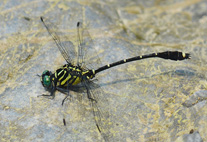Abstract
The Pirabas Formation in Brazil has been studied for many years and a great diversity of animal groups (in particular fishes, molluscs and echinoderms) have been described from there, whereas the Bryozoa have scarcely been mentioned. New samples, collected specifically to focus on bryozoans, have shown that the diversity in this formation is higher than previously thought. Here we describe two new species belonging to the cheilostomate genus Hippopleurifera—H. barbosae sp. nov. and H. confusa sp. nov. Both species were collected at Atalaia Beach, northeastern Pará state, which boasts some of the best marine Cenozoic fossil outcrops in Brazil. After accounting for all described species, plus the two new species and four generic reassignments (new combinations) described herein, some 29 Hippopleurifera species are now known. Most of these are fossils from Europe or the USA, but a handful are known from the Recent Mediterranean, Caribbean and Indo-West Pacific.

